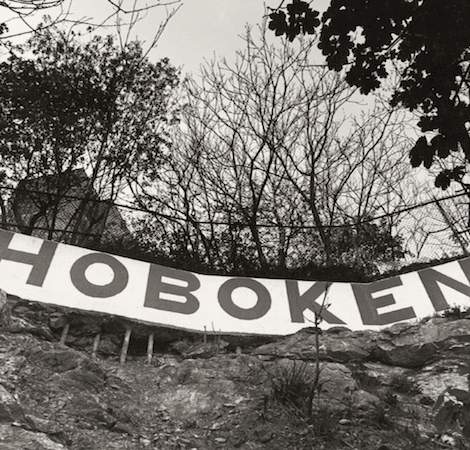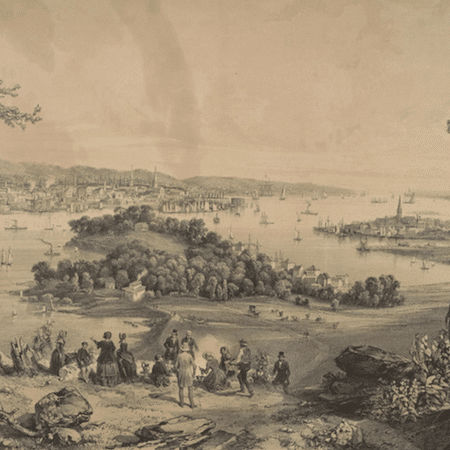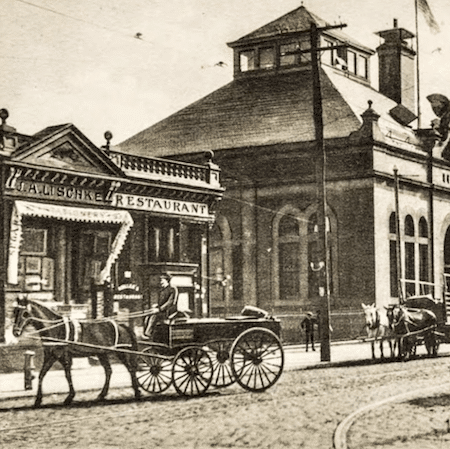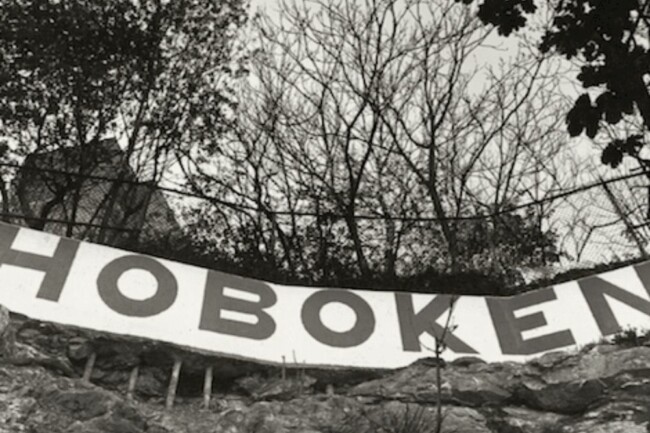Around Hoboken, there are tributes to Colonel John Stevens, the man claimed to have put Hoboken on its way to becoming what it is today: the Mile Square City that’s full of history and beauty. But Colonel John Stevens is far from the first person to have discovered Hoboken and was not even the first person to settle the land. Hoboken’s history began well before New Jersey was even a state. In honor of Columbus Day + Indigenous Peoples’ Day, which are honored on the second Monday in October, we look back on the discovery and some of the original inhabitants of Hoboken, New Jersey. Read on to learn about who actually discovered Hoboken.

{Photo credit: @hobokenmuseum}
The Delaware Native Americans
Starting at least 10,000 years ago, the Delaware Native Americans lived on the land we now know as New Jersey, according to NJ.gov. This group of people was also known as the Lenni Lenape, which means “original people” or “real people,” and they spoke an Algonquian dialect. They inhabited the area well before the first Europeans arrived in what is today known as the State of New Jersey.
As for how they lived, the Delaware Native Americans inhabited small communities largely made up of extended family members and lived off of the land. Men would hunt, look for clams or fish during the day, depending on the season, and women worked in gardens to grow squash, sweet potatoes, corn, and beans.
See More: Hoboken History: The Birthplace of Baseball
The Lenni Lenape Native Americans
The Hoboken Historical Museum details that the Lenni Lenape Native Americans also spent time in Hoboken. Hoboken was an island at the time, surrounded by the Hudson River and the body of water where the tide met the mouth of the river that formed at the base of the New Jersey Palisades. They seasonally camped in the area but were not permanent residents — even giving it the name “Hopoghan Hackingh,” which means “Land of the Tobacco Pipe,” because they used the area’s green-colored serpentine rock to carve pipes to smoke tobacco. When the Europeans arrived in Hoboken, anywhere from 8,000 to 20,000 Natives lived on the land here.

{Photo credit: @hobokenmuseum}
The Arrival of Europeans
The area was first seen by Europeans in 1609 when Henry Hudson’s navigator ship, the Half Moon, made its way to the area. Hudson and his crew journeyed through the river now named after the voyager (ahem, yes, that Hudson River) as well as the Newark Bay, where he noticed the area’s “green-veined rock.”
Although Hudson was of British origin, he worked for the Netherlands, so he claimed the land for the Dutch, thereby calling the area the New Netherlands. The Dutch roots in NJ could be another reason for the name Hoboken — the Dutch people who followed Hudson called the area “Hoebuck,” which means “high bluff.” The first European man to settle in the area, in fact, was a Dutchman named Hendrick Van Vorst, who leased a farmhouse in what is now Jersey City.
After Van Vorst returned to the Netherlands and eventually passed away in 1639, Aert Teunissen Van Putten leased the entire Mile Square area as a farm, constructing the township and state’s first brewery — though, of course, Indigenous People were making fermented beverages before this. After a war broke out between the settlers and the Natives, the Lenni Lenape people eventually killed him and burned down his property, but in 1658, the Dutch Governor of Manhattan, Peter Stuyvesant, bought the entirety of the land between the Hackensack and Hudson Rivers.
In return, he gave the Native Americans 80 fathoms of wampum, 20 fathoms of cloth, 12 kettles, six guns, two blankets, one double kettle, and half a barrel of beer. By then, small trading colonies of European settlers had started to form. Later, the land would go to William Bayard, but it was taken from him in 1776 because he identified as a Loyalist Tory. The Revolutionary Government of New Jersey confiscated it from him, and Colonel John Stevens bought it at a public auction in 1784 for 18,360 pounds sterling, which then equaled roughly $90,000, writes Robert Feldra. In today’s dollars, that would be about $2.66 million.

(Photo credit: @hobokenmuseum)
John Stevens in Hoboken
Colonel John Stevens ultimately settled on the name Hoboken and developed the area as a resort for the people of New York City. He started to build the waterfront into a recreation area, setting a precursor for the waterfront we know and love today. He put in a riverfront pathway and park in what would today be considered downtown Hoboken, an idea that has lasted since then.
Read More:The History of Dr. Martin Luther King Jr.’s Speeches in Jersey City
Three years after Stevens bought the land New Jersey became a state, the third to ratify the U.S. Constitution and the first to sign the Bill of Rights.
Hoboken and the surrounding area would go on to be the site of the first baseball game, become an important post to soldiers during World War 1, and welcomed visitors like George Washington, Charles Dickens, and Edgar Allen Poe. Our beloved city even birthed Frank Sinatra and many other talented, notable people — needless to say, Hoboken’s history is quite winding from way back when to now.











